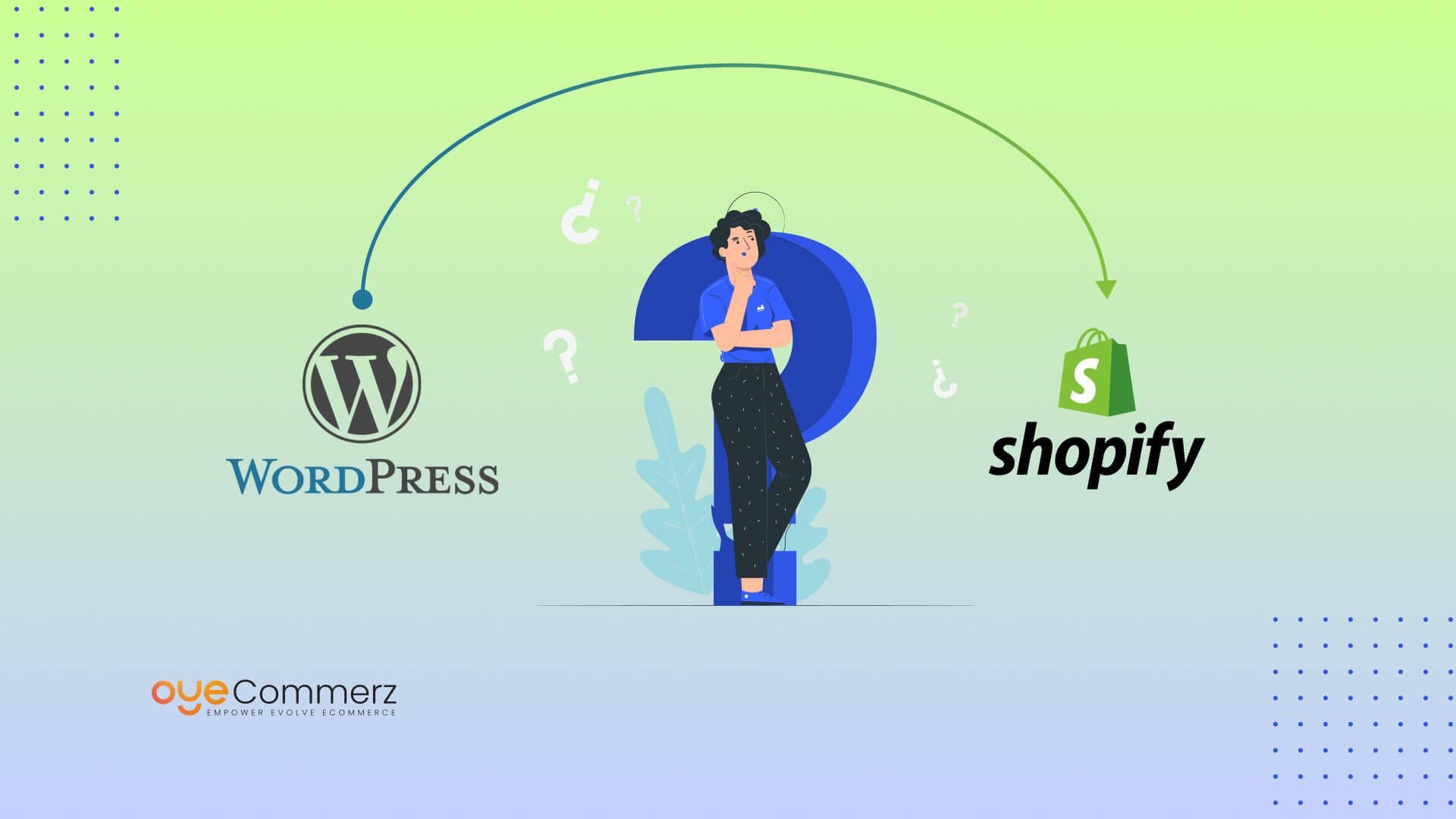Transitioning from WP to Shopify marks an exciting step toward optimizing your e-commerce processes. As companies expand, choosing a solution that aligns with scalability, user experience, and flexibility is essential. Shopify is widely recognized as a favorite for e-commerce professionals, providing unmatched flexibility, data protection, and user-friendliness. In this guide, we’ll explore the transformative impact of this migration, discuss the benefits, and provide practical tips to ensure a seamless move.
1. Why Migrate from WP to Shopify?
WordPress, paired with WooCommerce, continues to support countless online stores. Nevertheless, as companies scale, issues like reliance on plugins, data risks, and technical complexities can hinder growth. Shopify, designed explicitly for digital retail, addresses these concerns with an all-in-one, intuitive solution. Statistics supports this shift—Shopify powers over 4.4 million stores worldwide, with a documented 10% increase in sales conversion rates for many businesses post-switch.
2. Shopify's Perks for Thriving Online Stores
Shopify’s powerful platform is tailored for expanding businesses. Its standout benefits include:
- Seamless Customization: Shopify provides over 80 professionally designed themes.
- Built-in Features: Capabilities such as Shopify Payments and integrated SEO save time and effort.
- Global Reach: Currency versatility and regional customization enable businesses to expand internationally.
Additionally, Shopify delivers an availability percentage of 99.98%, ensuring your store remains accessible.
3. Getting Ready for Your WP-to-Shopify Transition
Before migrating, evaluate your existing setup. Analyze product data, customer details, and search engine rankings. Tools like Shopify’s Migration Kit or external tools help ease the transition. Create a detailed strategy, ensuring all assets—item details, media files, and articles—are optimized for transfer.
4. Data Migration: A Critical Step
Data migration is a cornerstone of a smooth platform switch. When migrating from WordPress to Shopify, focus on:
- Inventory Details: SKU, descriptions, and groupings.
- Client Information: Emails, purchase records, and preferences.
- SEO Optimization: Retain meta tags, URLs, and forwarding paths to avoid SEO losses.
Leverage tools such as LitExtension to streamline data transfer while reducing mistakes.
5. Tailoring Your Shopify Store to Fit Your Brand
Post-migration, customizing your Shopify store helps it aligns with your business identity. Take advantage of Shopify’s intuitive page builder to design pages effortlessly. Shopify's themes are optimized for all devices, providing a smooth user experience across platforms—a critical factor, since 74% of online shopping is generated by mobile users.
6. Maintaining SEO During Migration
SEO is vital for maintaining your online presence during migration. Shopify is highly optimized for search engines with clean URL structures, preloaded features, and seamless blog integration. Make sure you:
- Set up URL forwarding for existing links.
- Enhance updated content with targeted Shopify store launch services phrases.
- Use Shopify's apps Plug in SEO to track analytics after the switch.
7. Post-Migration Testing
Once the migration is complete, run detailed checks.
Review: - Page load times (Shopify boasts faster speeds in contrast with WordPress).
- Functionality of payment gateways and checkout processes.
- Adaptability across devices.
Testing ensures your store delivers a seamless shopping journey from the start.
8. Real-Life Success Story
An example of effective platform switching is Gymshark, a fitness apparel brand that transitioned to Shopify. After the switch, the company experienced a 60% boost in mobile sales and significantly lowered site downtime. This showcases the capabilities of Shopify in enhancing e-commerce growth.
9. Overcoming Common Migration Issues
Migration comes with challenges, such as data integrity and adjusting tailored features. However, Shopify’s robust support and third-party experts make overcoming these hurdles manageable. Collaborating with qualified Shopify developers ensures a trouble-free transition.
10. Starting Your Journey with Shopify
Switching from WordPress to Shopify marks a strategic decision to e-commerce. By addressing scalability, simplifying management, and enhancing the customer experience, Shopify enables companies to succeed in competitive markets.
Final Thoughts
Transitioning from WordPress to Shopify is a strategic move that can greatly enhance your e-commerce success. With a robust migration plan, Shopify SEO setup the appropriate resources, and expert support, you can unlock new success milestones.
Excited to start the journey? Let’s discuss how our Shopify migration services can transform your e-commerce platform. Get in touch today, or consider: Is it time to seize Shopify’s advantages for your store?
